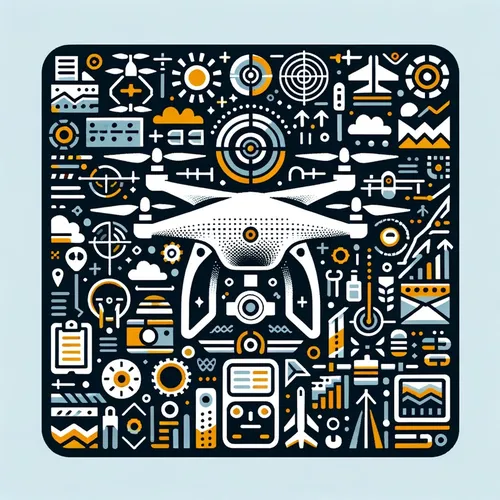Drones, Danger, and Dollars: Navigating the High-Stakes World of Commercial Piloting
- Author
- Quiet. Please
- Published
- Sat 03 May 2025
- Episode Link
- https://www.spreaker.com/episode/drones-danger-and-dollars-navigating-the-high-stakes-world-of-commercial-piloting--65877576
This is you Professional Drone Pilot: Flight Tips & Industry Updates podcast.
Professional drone pilots entering this week are navigating a landscape that demands both technical mastery and sharp business acumen. With the global commercial drone market projected to reach nearly fifty-eight billion dollars by 2026, opportunities are expanding rapidly, especially in energy, construction, and agriculture. To stay competitive, advanced flight techniques have become essential. Drills such as precise tracking, 45-degree ascents, orbital shots, and smooth transitions not only provide sharper footage but equip pilots to handle unpredictable conditions, including abrupt weather changes and confined urban environments. Regularly practicing these maneuvers hones precision and reaction time, which is critical as clients expect both safety and cinematic quality.
Operational reliability is underpinned by meticulous pre-flight routines. Before every mission, inspect battery health, update firmware, and check all hardware including propellers and gimbals. As the market pivots toward higher-end solutions like GPS-enabled controllers and ultra-high-resolution cameras, regular maintenance and timely upgrades directly impact your reputation and reduce downtime. Maintaining records of repairs, software updates, and battery cycles is now standard practice for responsible fleet management.
The business side is equally dynamic. As regulatory bodies continue to refine licensing and certification standards, keeping current with the latest requirements is non-negotiable—especially since clients increasingly request proof of compliance and insurance before awarding contracts. Recent updates highlight the need for comprehensive liability insurance tailored to each operation, as new policies offer broader coverage for payloads, cyber risks, and privacy issues.
Weather is a perennial challenge, and successful pilots integrate detailed forecasts and real-time monitoring into flight planning. Efficient use of automated weather tools, coupled with on-the-spot adjustments, minimizes risk and preserves data integrity. The value of this approach is clear in critical applications such as infrastructure inspection, where drones not only improve safety but can reduce inspection costs and time by more than fifty percent compared to manual methods.
Current news this week spotlights a hospital network announcing a new contract for drone-based delivery, a record-breaking energy sector inspection completed in under four hours, and updated federal drone pilot testing standards that now include expanded airspace and safety modules.
Looking forward, the integration of artificial intelligence-driven analytics, real-time data streaming, and modular payloads is set to transform the field further. Pilots who invest in ongoing training, optimize their workflow for reliability, and cultivate strong client relationships are best positioned to lead in this rapidly expanding market. For immediate action, dedicate time to advanced flight practice, schedule equipment maintenance, review your insurance coverage, and refresh your knowledge of regional airspace regulations. These steps will help you command both the skies and your business’s future.
For more http://www.quietplease.ai
Get the best deals https://amzn.to/3ODvOta
